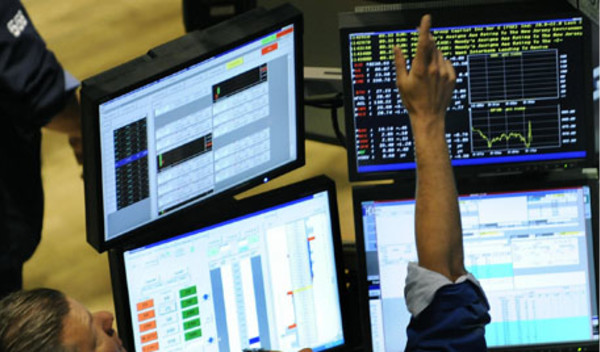

As equity prices move higher and bonds remain expensive (despite the recent sell-off), investors are increasingly seeking an alternative home for clients’ capital in the hope of delivering returns above cash deposits while maintaining capital values in the event of sharp moves in equity or bond prices.
It is therefore unsurprising that the alternatives Ucits funds have been one of the most popular destinations for European investors’ capital in 2016, with €21bn flowing into funds in these categories the first three-quarters of the year.
However, the alternatives universe can be a bewildering place due to the wide number of strategies available. It is possible to track 20 alternative categories across Europe populated by over 2,300 funds.
Despite this additional granularity, though, Morningstar does not currently publish average performance numbers for these categories as the underlying funds are not sufficiently homogenous to make a category average meaningful for investors.
It seems that this variety is creating confusion among investors, advisers and portfolio managers who have become reluctant to engage with such a diverse range of investment options. Evidence for this view is provided by the concentration of flows into multi-asset absolute return funds. This category has accounted for 48 per cent of net capital inflows since the beginning of 2014.
These funds do not fit well into a typical asset allocation template but instead form a sub-portfolio that is carved out of the main portfolio. Consequently, investor enthusiasm for such products appears to indicate desire to achieve a return stream rather than gain to particular asset or strategy exposure.
Other categories and the funds that populate them have seen much more muted support from investors. Seven categories have an average fund size of less than €100 million per fund and a further seven have average fund sizes of between €100 and €200 million. These figures are important as many portfolio managers look for a minimum of €100 in capital allocating to a new fund. Hence a category with lower than €100 million per fund is less likely to raise further assets quickly.
Further evidence of this confusion is provided by concentration of flows and assets in a small number of funds. While this is most noticeable in some of the smaller categories, it is equally evident at a higher level with 50 per cent of flows in the year to June 2016 being directed into just 10 funds. This concentration is similarly evident at the asset level with 22 per cent of the assets in alternatives funds being invested in the top 10 funds.
Alongside confusion, this extreme level of concentration may reflect a lack of quality in the alternative funds universe. At present only 20 funds carry a positive Morningstar analyst rating, representing 0.84 per cent of the total funds available.
This dearth of quality can also be surmised from the poor performance of alternative funds in aggregate. While past performance is not a guide to future returns, it is one of the best ways of assessing the achievement of managers and is especially relevant for alternative funds as they should be less susceptible to asset price movements.
Past performance should therefore be primarily determined by the luck and skill of the manager, which are indistinguishable over the short term. Viewed in this way, alternatives managers have been either unusually unlucky or lack demonstrable skill. Only 43 per cent of funds have achieved a positive return in 2016, a little worse than the 55 per cent that achieved it in 2015 and 72 per cent in 2014.
A key contributor to these poor returns has been the high level of fees charged by alternative fund managers. On average, the primary share class of alternative funds charge 1.9 per cent. In a zero (or negative) interest rate environment, this creates a significant drag on returns and therefore a challenging hurdle to meeting the investment objectives. This, in turn, reduces the probability that these funds will meet their objectives in the future.
Despite the performance drag created by high fees, it appears that as a whole, investors are insensitive to fees in this market. This is demonstrated by the fact that the distribution of assets across different fee levels is similar to the number of funds at each level. If investors were more fee conscious, one would expect the former to exhibit negative skewness versus the latter.
While it is not possible to identify the source of this fee insensitivity with complete confidence, it seems likely that two factors are especially important. The first is that alternative funds currently face little competition from passive options. The presence of a passive alternative to an active fund is becoming a key source of fee pressure in the active management arena.
In contrast to this, we estimate that there are currently only four passive, alternative funds (excluding ETFs) widely available to UK-based investors. The competition posed by passives is therefore tiny compared to the pressure exerted on fees by passive funds investing in traditional assets. Without this competitive pressure, it seems unlikely that fees will decline quickly.
The second likely source of continuing high fees is an enduring belief in the ability of alternative funds to generate the forecasted return stream. This desire has become increasingly strong (despite poor results) due to the lack of ‘low risk’ returns available from traditional asset classes such as cash and bonds. While it appears reasonable to pay for scarce investment skill, it is ultimately self-defeating to pay so much that the fee consumes the benefits of that skill. This is an especially important consideration in a Ucits environment where managers are less able to capture an illiquidity premium or use high levels of leverage to boost returns.
It is also worth noting that the returns received by the average investor tend to be below that delivered by the fund as investors typically buy and sell funds at the wrong times in an attempt to chase past-performance. Data from Morningstar Direct shows that over the decade to the end of 2015, the average investor return from alternative funds lagged the fund return by 0.64 per cent a year.
So what conclusions can we draw from this data? The first is that the enthusiasm for alternatives is being driven by a desire for consistent positive return streams that are independent of market movements. This desire is leading to very high levels of asset concentration and an insensitivity to fees.
The poor performance of the broader alternatives universe undermines the argument that allocating to alternative funds in general should improve outcomes to investors over the long term, although they may be useful in controlling short term volatility.
Rather than focusing on adding alternatives exposure to a portfolio, advisers should instead focus their efforts on identifying the best funds. Having found these funds, avoid the temptation to chase short-term performance as that is likely to handicap already low returns. In essence, investors need an alternative to the current blind enthusiasm for alternatives.
Dan Kemp is chief investment officer of Morningstar Investment Management Europe
Key points
Investors are increasingly seeking an alternative home for clients’ capital
There is a concentration of flows and assets in a small number of funds
The enthusiasm for alternatives is being driven by a desire for consistent positive return streams



